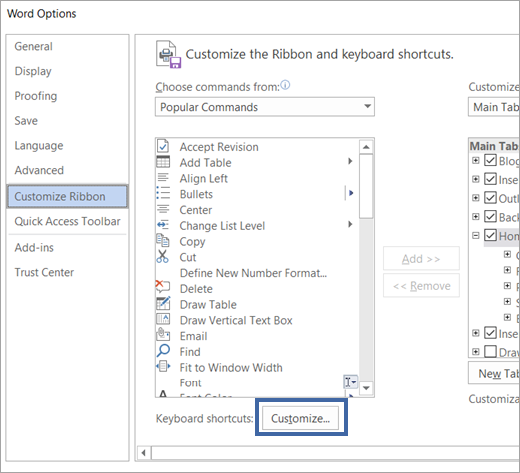

Move from one group of controls to another. Move to the submenu when a main menu is open or selected.
#Change excel keyboard shortcuts windows
Or, on a Windows keyboard, the Windows Menu key (usually between the Alt Gr and right Ctrl keys) When a menu or submenu is open, move to the next command. Show the tooltip for the ribbon element currently in focus. Move down, up, left, or right, respectively, among the items on the ribbon. Move the focus to commands on the ribbon. To move to a different tab, use access keys or the arrow keys. Select the active tab on the ribbon and activate the access keys.Īlt or F10. Top of Page Work in the ribbon with the keyboard Open the View tab and preview page breaks and layouts, show and hide gridlines and headings, set zoom magnification, manage windows and panes, and view macros. Open the Review tab and check spelling, add notes and threaded comments, and protect sheets and workbooks. Open the Data tab and connect to, sort, filter, analyze, and work with data. Open the Formulas tab and insert, trace, and customize functions and calculations. Open the Page Layout tab and work with themes, page setup, scale, and alignment. Open the Insert tab and insert PivotTables, charts, add-ins, Sparklines, pictures, shapes, headers, or text boxes. Open the Home tab and format text and numbers and use the Find tool.

Move to the Tell me or Search field on the ribbon and type a search term for assistance or Help content. Additional tabs might appear depending on your selection in the worksheet. To go directly to a tab on the ribbon, press one of the following access keys.

If you don't know the sequence, press Esc and use Key Tips instead. If you know the entire key sequence, go ahead, and use it. A notification pops up saying you're using an access key from an earlier version of Microsoft Office. For example, press Alt, and then press one of the old menu keys, for example, E (Edit), V (View), I (Insert), and so on.
#Change excel keyboard shortcuts full
However, you need to know the full shortcut. In Office 2013 and Office 2010, most of the old Alt key menu shortcuts still work, too. Both offer a largely similar experience, but some options and search results can vary. Press Alt again to see KeyTips for the options for the selected tab.ĭepending on the version of Office you are using, the Search text field at the top of the app window might be called Tell Me instead. For example, press Alt+H to open the Home tab, and Alt+Q to move to the Tell me or Search field. You can combine the Key Tips letters with the Alt key to make shortcuts called Access Keys for the ribbon options. Press the Alt key to display the ribbon shortcuts, called Key Tips, as letters in small images next to the tabs and options as shown in the image below. For example, on the Home tab, the Number group includes the Number Format option. The ribbon groups related options on tabs. This table lists the most frequently used shortcuts in Excel. Keyboard shortcuts for refreshing external data Keyboard shortcuts for working with data, functions, and the formula bar
/ExcelCharts-5bd09965c9e77c0051a6d8d1.jpg)
Keyboard shortcuts for making selections and performing actions Keyboard shortcuts in the Paste Special dialog box in Excel 2013 Keyboard shortcuts for navigating in cells Get the Excel 2016 keyboard shortcuts in a Word document: Excel keyboard shortcuts and function keys. For instructions, go to Automate tasks with the Macro Recorder.ĭownload our 50 time-saving Excel shortcuts quick tips guide. If an action that you use often does not have a shortcut key, you can record a macro to create one. Press Ctrl+F, and then type your search words. And on further investigation nor does PowerPoint 2010, Visio 2010, or Outlook 2010 (I didn’t check all the Office programs).To quickly find a shortcut in this article, you can use the Search. Microsoft Excel 2010 (and likely earlier versions), does NOT have any option available to view existing key combinations or to create your own. I was alerted to this lack because of a comment on one of my blog posts - Ctrl+Shift+C activates the Format Painter in Word, but doesn’t do so in Excel, even though Excel also has the Format Painter function. Or you can modify those that are already assigned in Word (though I wouldn’t advise it, because if you have to reinstall Word or you use someone else’s machine your keyboard shortcuts won’t work the same as the ones you’ve set up for your installation of Word).Īssigning keyboard shortcuts has been a feature in Word for years, and I just assumed that the other Office products would have similar functionality. One of the things I like about Word is that you can specify your own keyboard shortcuts for your macros and for functions that don’t already have a key combination.


 0 kommentar(er)
0 kommentar(er)
